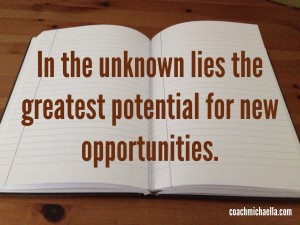 Business is a funny thing. It’s a space where knowledge, expertise, and excellence are revered more so than any other facet of our lives. We all strive to become the experts in our industries, the “thought leader.” But what happens when our know-it-all attitude becomes stale and we find ourselves bored in our work? What happens when we no longer feel challenged? It’s a dangerous position to find ourselves because when we are no longer challenged, we also lose motivation for creativity and innovation. Finding yourself in that place is certainly bad for business.
Business is a funny thing. It’s a space where knowledge, expertise, and excellence are revered more so than any other facet of our lives. We all strive to become the experts in our industries, the “thought leader.” But what happens when our know-it-all attitude becomes stale and we find ourselves bored in our work? What happens when we no longer feel challenged? It’s a dangerous position to find ourselves because when we are no longer challenged, we also lose motivation for creativity and innovation. Finding yourself in that place is certainly bad for business.
Ask yourself, what is more important – knowing or not knowing? The answer certainly isn’t black and white. Of course, when you are selling a product or service it pays to have a great amount of knowledge about that product or service. It helps maintain your reputation and your credibility that you know what you’re talking about, and that your advice can be trusted. However, we don’t need to take that to the extreme where we pretend to know everything. Products and services should always be changing, evolving, and with that so should your knowledge be ever changing and evolving. Admitting you don’t know something is a vulnerable place, but it’s also the catalyst for growth. It’s also the perfect opportunity to display your human side and be relatable – “I don’t know the answer to that, but I’ll find out for you.”
Business, learning, and growth should all go hand in hand. It should be encouraged to ask questions and challenge your existing products. Strive to make your business agile so that you and your employees can create and innovate as you go along. It is about creating a business culture that encourages what Liz Wiseman calls “The Perpetual Rookie”, which means embracing curiosity, humility, playfulness, and being deliberate in everything you do. In rookie mode, you have nothing to lose and everything to gain.
It’s been proven that being challenged at work increases employee satisfaction. That goes for yourself, as well. Embracing the “I don’t know” of a situation takes you back to square one, but it also will instill in you a feeling of challenge and excitement in figuring the problem out. It will also lead to greater product innovation and creativity, which I think we all can agree, is very good for business.
 Do you write a blog for your business? Have you ever wondered how to get more exposure for your blog and/or website? Do you want to expand the reach of your message? For the sake of your marketing strategy and growing your business you should have answered ‘yes’ to all of these questions. That’s why it’s worth learning more about Pulse, which is LinkedIn’s Publishing platform.
Do you write a blog for your business? Have you ever wondered how to get more exposure for your blog and/or website? Do you want to expand the reach of your message? For the sake of your marketing strategy and growing your business you should have answered ‘yes’ to all of these questions. That’s why it’s worth learning more about Pulse, which is LinkedIn’s Publishing platform.
















